Descurainia sophia – 葶苈子,ting li zi,Tinglizi,Lepidium apetalum,flixweed,descurainia,descurainia sophia seed,flixweed seed,Tinglizi
[Medicinal Use] This product is the seed of the cruciferous plant Artemisia sophora japonica.
[Nature and flavor and meridians] Pungent, bitter, very cold. Enters the lung and bladder meridians.
[Effects] Drain the lungs and calm asthma, promote water flow and reduce swelling.
[Clinical Application] 1. Used for symptoms such as stagnation of phlegm and saliva, cough and asthma.
Tinglizi can drain the lungs and move downward, promote water flow and eliminate phlegm, so it has the effect of draining the lungs and calming asthma. It is suitable for phlegm and saliva blocking the lungs, coughing, phlegm and asthma, and phlegm in the throat like a sawing sound. When used, it can be used with Morus alba, Inula flower and other medicines.
2. Used for those with edema of the face, water accumulation in the chest and abdomen, and difficulty urinating.
This product drains the stagnation of lung qi and benefits the water in the bladder, so it can also be used for those with facial swelling, difficulty urinating, water accumulation in the chest and abdomen and solid symptoms. It is often used in combination with Stephania tetrandra, Zanthoxylum bungeanum, Rhubarb and other products.
[Prescription name] Sweet scutellaria, scutellaria seeds (for drying), stir-fried scutellaria (for stir-frying), roasted scutellaria (for roasting with honey)
[General dosage and usage] One to three qian, wrapped and decocted.
[Comments] 1. Scutellaria seeds are bitter and can purge the lungs and relieve asthma, promote diuresis and reduce swelling. Their effects are similar to those of mulberry bark but stronger.
2. In the past, it was generally believed that the power of scutellaria seeds in purging the lungs and promoting diuresis was relatively strong, and it was only suitable for solid diseases, and was not suitable for symptoms such as shortness of breath due to lung deficiency and swelling due to spleen deficiency. However, there have been reports recently that it was used in combination with drugs such as astragalus and aconite to treat symptoms such as shortness of breath and edema of pulmonary heart disease.
3. The ancients said that scutellaria seeds are bitter and sweet, the sweet ones are slow in nature, and the bitter ones are urgent in nature. Currently, there is only one kind in Shanghai pharmacies, commonly known as sweet scutellaria, and there is no bitter scutellaria.
4. According to research, the seeds of Descurainia sophia (L.) Webb.ex Prantl. or Lepidium apetalum Willd. in the cruciferous family are used in the northern region, which are commonly known as northern tinglizi.
[Example of prescription] Tingli Dazao Xiefei Decoction “Golden Chamber Synopsis”: Tinglizi, jujube. Treats water retention in the lungs, chest fullness, coughing, and swelling of the whole body and face.
This product is the dried mature seeds of Descurainia sophia (L.) Webb.ex Prantl. or Lepidium apetalum Willd. in the cruciferous family. The former is commonly known as “southern tinglizi” and the latter is commonly known as “northern tinglizi”. Harvest the plants when the fruits are ripe in summer, dry them in the sun, rub out the seeds, and remove impurities.
【Properties】
The seeds of southern scutellaria are oblong and slightly flat, about 0.8~1.2mm long and about 0.5mm wide. The surface is brown or reddish brown, slightly shiny, with two longitudinal grooves, one of which is more obvious. One end is rounded, the other end is slightly concave or relatively flat, and the hilum is off-white and located at the concave end or the flat part. The smell is slight, the taste is slightly pungent and bitter, and it is slightly sticky.
The seeds of northern scutellaria are flat and oval, 1~1.5mm long and 0.5~1mm wide. One end is blunt and round, the other end is pointed and slightly concave, and the hilum is located at the concave end. The taste is slightly pungent and the viscosity is strong.
【Identification】
(1) Take a small amount of this product, soak it in water, and observe it with a magnifying glass. The transparent mucus layer of southern scutellaria is thin, with a thickness of about less than 1/5 of the width of the seed. The transparent mucus layer of northern scutellaria is thicker, and the thickness can exceed 1/2 of the width of the seed.
(2) Southern Grass Ligustrum lucidum Seeds The powder is yellow-brown. The epidermal cells on the outer seed coat are mucous cells, which are square in cross section. The inner wall is thickened and extends outward to form a cellulose column. The cellulose column is 8-18um long, with a rounded, oblique or truncated top, and mucous texture can be seen around it. The epidermal cells in the inner seed coat are yellow, rectangular and polygonal in surface view, with a diameter of 15-42um and a wall thickness of 5-8um.
Northern Grass Ligustrum lucidum Seeds The epidermal cells on the outer seed coat are slightly rectangular in cross section, with a long cellulose column of 24-34um in length. The epidermal cells in the inner seed coat are rectangular and polygonal or square in surface view.
(3) Southern Grass Ligustrum lucidum Seeds Take 19 grams of this product powder, add 20 ml of 70% methanol, heat and reflux for 1 hour, filter, and take the filtrate as the test solution. Take another quercetin-3-0-β-D-glucose-7-0-B-D-gentiobioside reference substance, add 30% methanol to make a solution containing 90ug per 1m, as the reference substance solution. According to the thin layer chromatography method (General Rule 0502), take 14 of each of the above two solutions and spot them on the same polyamide film, use ethyl acetate-methanol-water (7:2:1) as the developing agent, develop, take out, dry, spray with 2% aluminum chloride ethanol solution, blow dry with hot air, and examine under ultraviolet light (365nm). In the chromatogram of the test product, the same yellow fluorescent spot appears at the corresponding position of the chromatogram of the reference substance.
【Inspection】
The moisture content shall not exceed 9.0% (General Rule 0832, Method 2)
The total ash content shall not exceed 8.0% (General Rule 2302)
The acid-insoluble ash content shall not exceed 3.0% (General Rule 2302),
Swelling degree Take 0.6g of this product, weigh it, and measure it according to the swelling degree determination method (General Rule 2101). The southern grass lily seed shall not be less than 3, and the northern lily seed shall not be less than 12
【Content determination】
The southern lily seed shall be determined according to the high performance liquid chromatography method (General Rule 0512).
Chromatographic conditions and system suitability test Use octadecylsilane bonded silica gel as filler; acetonitrile-0.1% acetic acid solution (11:89) as mobile phase; detection wavelength is 254nm. The theoretical plate number calculated based on the quercetin-3-0-β-D-glucose-7-0-β-D-gentiobioside peak should not be less than 5800.
Preparation of reference solution Take an appropriate amount of quercetin-3-0-β-D-glucose-7-0-β-D-gentiobioside reference, weigh accurately, add 30% methanol to make a solution containing 20ug per 1ml, and obtain
Preparation of test solution Take about 1g of the powder of this product (passed through a No. 4 sieve), weigh accurately, put it in a stoppered conical bottle, accurately add 50ml of 70% methanol, stopper, weigh the weight, heat and reflux for 1 hour, cool, weigh again, make up the lost weight with 70% methanol, shake, filter, and take the filtrate to obtain.
Determination method Accurately aspirate 25ml of reference solution and test solution respectively, inject into liquid chromatograph, and determine to obtain. This product, calculated on a dry basis, contains no less than 0.075% quercetin-3-0-β-D-glucose-7-0-β-D-gentiobioside (C33H40022)
Decoction pieces
[Processing]
Remove impurities and ash from the seeds of the scutellaria baicalensis.
[Properties][Identification][Inspection][Content determination]
Same as the medicinal material.
Total ash content shall not exceed 8.0% (General Rule 2302)
Acid-insoluble ash content shall not exceed 3.0% (General Rule 2302),
Swelling degree Take 0.6g of this product, weigh it, and determine it according to the swelling degree determination method (General Rule 2101). The southern grass scutellaria baicalensis shall not be less than 3, and the northern scutellaria baicalensis shall not be less than 12
[Content determination]
The southern scutellaria baicalensis shall be determined according to the high performance liquid chromatography method (General Rule 0512).
Chromatographic conditions and system suitability test: Octadecylsilane bonded silica gel was used as filler; acetonitrile-0.1% acetic acid solution (11:89) was used as mobile phase; the detection wavelength was 254nm. The theoretical plate number calculated based on the quercetin-3-0-β-D-glucose-7-0-β-D-gentiobioside peak should be no less than 5800.
Preparation of reference solution Take an appropriate amount of quercetin-3-0-β-D-glucose-7-0-β-D-gentiobioside reference, weigh accurately, add 30% methanol to make a solution containing 20ug per 1ml, and obtain
Preparation of test solution Take about 1g of the powder of this product (passed through a No. 4 sieve), weigh accurately, put it in a stoppered conical bottle, accurately add 50ml of 70% methanol, stopper, weigh the weight, heat and reflux for 1 hour, cool, weigh again, make up the lost weight with 70% methanol, shake, filter, and take the filtrate to obtain.
Determination method Accurately aspirate 25ml of reference solution and test solution respectively, inject into liquid chromatograph, and determine to obtain. This product, calculated on a dry basis, contains no less than 0.075% quercetin-3-0-β-D-glucose-7-0-β-D-gentiobioside (C33H40022)
Decoction pieces
[Processing]
Remove impurities and ash from the seeds of the herb.
[Properties][Identification][Inspection][Content determination]
Same as the herb.
Stir-fried seeds of the herb Take the clean seeds of the herb and stir-fry them according to the stir-frying method (General Rule 0213) until there is a popping sound.
[Properties]
This product is shaped like the seeds of the herb, slightly bulging, and has a brownish-yellow surface. It has an oily aroma and is not sticky.
[Inspection]
Same as the herb, no more than 5.0%. Water content
[Content determination] Southern scutellaria seeds Same as medicinal materials, containing quercetin-3-0-β-D-glucose-7-0-β-D-gentiobiglycoside (C33H40022) not less than 0.080%.
[Identification][Inspection]
(Total ash acid-insoluble ash) Same as medicinal materials.
[Properties and meridians]
Spicy, bitter, very cold. Enters the lung and bladder meridians.
[Functions and indications]
Purges the lungs and relieves asthma, promotes water circulation and reduces swelling. Used for phlegm and saliva blocking the lungs, asthma, cough and sputum, chest and flank distension, inability to lie flat, chest and abdominal edema, and difficulty urinating.
[Usage and dosage]
3~10g, wrapped and decocted.
[Storage]
Put in a dry place. Where is the main production area of tianlizi?
Northern tianlizi: It grows on hillsides, ditches, roadsides and villages at an altitude of 400~2000m. It is a common field weed. It is distributed in North China, Northeast China, East China, Southwest China, Northwest China and other places, and is mainly produced in Hebei, Liaoning and Inner Mongolia.
Southern tianlizi: It grows on hillsides, fields and farmlands. It is distributed in North China, Northeast China, East China, Southwest China, Northwest China and other places, and is mainly produced in Jiangsu, Anhui, Shandong and other places.
Where is the main medicinal part of tianlizi?
Medicinal part of tianlizi:
The medicinal part of tianlizi is the dried mature seeds of Descurainia sophia (L.) Webb.ex Prantl. or Lepidium apetalum Wid. of the cruciferous plant. The former is commonly known as “Southern tianlizi” and the latter is commonly known as “Northern tianlizi”. When the fruit is ripe in summer, the plant is harvested, dried, the seeds are rubbed out, and impurities are removed. Through different processing methods, Chinese medicinal pieces such as tianlizi, honey tianlizi, and fried tianlizi can be produced.
Characteristics of the medicinal parts of tianlizi:
· Southern tianlizi: oblong and slightly flat, about 0.8~1.2mm long and about 0.5mm wide. The surface is brown or reddish brown, slightly shiny, with 2 longitudinal grooves, one of which is more obvious. One end is blunt and round, the other end is slightly concave or relatively flat, and the hilum is off-white and located at the concave end or flat truncation. The smell is slight, the taste is slightly bitter, and it is slightly sticky.
Northern tianlizi: flat oval, 1~1.5mm long, 0.5~1mm wide. One end is blunt and round, the other end is pointed and slightly concave, and the hilum is located at the concave end. The taste is slightly spicy and the viscosity is strong. The best ones are those with full grains and brown color.
How are the ancient books about tianlizi recorded?
Tinglizi was first recorded in Shennong’s Herbal Classic and was listed as a low-grade product: “Tingli, also known as Dashi, Dashi, tastes spicy and cold, grows in Pingze. Treats fatigue, accumulation of qi, cold and heat in food, breaks up hardness and expel evil, and clears the water channel” “Those from Pengcheng are the best, and there are also some in the nearby roads now.
“Famous Doctors’ Records” “Tinglizi, very cold, non-toxic. It can lower bladder water, retain heat, and cause evil water between the skin to come out, causing swelling of the face. It can treat sudden stroke, heat, itching, and lower abdomen. Long-term use makes people weak. It is also called Dingli and Xunhao. It grows in Gaocheng and fields. The fruit is harvested after the beginning of summer and dried in the shade. It is good for wine, and elm bark is used as a messenger. It is bad for silkworm and stone dragon.
“Kaibao Materia Medica” “Treats lung abscesses, coughs, and relieves shortness of breath.
“Yao Xing Lun” “It can promote urination, relieve lung qi, and relieve shortness of breath, and stop coughing.
“Shang Han Lei Yao” “Relieves kidney disease and dry lips”
“Ben Cao Yan Yi” “The seeds of scutellaria baicalensis are used. The taste of seeds is sweet and bitter, but their shape is the same. Since the “Classic” says that the taste is bitter and bitter, the sweet one is no longer a medicine. Generally speaking, the treatment of the body is to move water and drain, so it is said that long-term use makes people weak. The meaning of bitterness and drainage is very clear. “Yao Xing Lun” has said it all, but it should not be said that it tastes sour.”
“Xin Yin Cang Zhu Jing” “Relieves all the body edema, expel the heat in the bladder, stabilize the shortness of breath of the lung qi, and treat the phlegm and syncope of stagnant fluid.
Effects
The main effect of tianlizi is to purge the lung and relieve asthma, promote water flow and reduce swelling
What are the main effects and clinical applications of tianlizi?
Tinglizi is used for phlegm blocking the lung, asthma, cough and sputum, chest and flank distension, inability to lie flat, chest and abdominal edema, and difficulty in urination.
Tinglizi is used raw and has a strong effect on descending and draining lung qi. It is suitable for diuresis and swelling, and is suitable for solid evidence. It is mostly used for pleural effusion and systemic edema. Stir-fried tianlizi has a mild medicinal property to avoid damaging lung qi, and can be used for patients with deficiency in solid. It is mostly used for cough, asthma, and abdominal distension. At the same time, the shell is broken and the enzyme is destroyed, which makes it easy to decoct the medicinal effect, which is conducive to the preservation of glycoside components. Honey tianlizi is used for lung deficiency and phlegm blocking cough.
Phlegm blocking the lung, asthma, cough and sputum, chest and flank distension, inability to lie flat
·This product is pungent and bitter, and its nature is It clears away heat and clears away water and phlegm in the lungs, and relieves asthma and cough. It is used for phlegm-heat blocking the lungs, cough and phlegm, phlegm blocking, qi reversal and asthma and cough, lung heat and fluid retention, facial edema, asthma and inability to lie down, heat and toxicity blocking the lungs, coughing up turbid phlegm with a foul smell, and lung abscesses.
Chest and abdominal edema, urination difficulties
· This product relieves the obstruction of lung qi and regulates the water channels, promoting diuresis and reducing swelling. It is used for lung failure to descend, water qi not flowing, edema, and urination Unfavorable. Insecticide
·Bitter taste, bitterness can dry dampness, bitterness can kill insects, often used for scrofula, tuberculosis, rickets, tooth decay, head ringworm and other diseases. Glossary:
Lung abscess: due to heat toxicity stagnation in the lungs, sores form on the lung lobes, flesh rots and blood rots, forming abscesses, with fever, cough, chest pain, and vomiting of fishy and foul sputum.
Severe cases of coughing up pus and blood sputum are the main clinical manifestations of a disease.
Scrofula: refers to the occurrence of neck and armpits Patients with chronic infection diseases of lymph nodes in other places. Mainly refers to cervical lymph node tuberculosis. Also known as rat fistula, rat sore, rat sore, nine-son sore, rat sore, walking rat sore, mole cricket sore, Yanzhu scrofula, wild scrofula, string sore, also known as “Lizi neck”, “neck calendar”, “scabies calendar”. The ancients believed that the small one was scrofula and the large one was scrofula.
Scurvy worms and tooth decay: scurvy worms refer to worms caused by malnutrition; tooth decay refers to gum ulcers, tooth decay and other symptoms.
What are the compound preparations containing tianlizi?
The compound preparations containing tianlizi are:
Tingbei capsule
Clears the lungs and resolves phlegm, relieves cough and asthma. It is used for cough, expectoration, wheezing, chest tightness, yellow or greasy tongue coating caused by phlegm-heat blocking the lungs, and acute attacks of chronic bronchitis with the above symptoms.
Qingfei Huatan pill
Moistens the lungs and stops cough, resolves phlegm and calms asthma. It is used for cough and sticky phlegm caused by dryness and heat in the lung meridian, blood in phlegm, asthma, chest fullness, dry mouth and throat
Jiangqi Dingchuan pill
Descends qi and calms asthma, removes phlegm and relieves cough. It is used for cough and sputum caused by phlegm blocking the lungs, qi reversal and shortness of breath; chronic bronchitis and bronchial asthma with the above symptoms
Tingli Jiangxuezhi tablet
Promotes the circulation of qi and removes stagnation, eliminates phlegm and eliminates dampness. It is used for dizziness caused by phlegm-dampness blocking, with symptoms of dizziness, heaviness of limbs, numbness of limbs, constipation, yellow or greasy tongue coating; hyperlipidemia with the above symptoms
Heat-clearing and cough-relieving syrup
It clears heat, relieves cough and eliminates phlegm. It is used for cough with yellow phlegm caused by phlegm-heat in the lungs; colds and pharyngitis with the above symptoms
Quanxiao tablets
It clears the lungs and removes congestion, removes phlegm and blood stasis, and promotes qi and relieves asthma. It is used for acute attacks of bronchial asthma with heat, asthma, phlegm and blood stasis in the lungs, with symptoms of rough breath, sputum, and roaring phlegm.
Coughing and choking, thick yellow phlegm.
Modern research progress on scutellaria baicalensis
Scutellaria baicalensis mainly contains flavonoids (quercetin-3-0-β-D-glucose-7-0-β-D-gentiobioside, quercetin, etc.), volatile oils (mustard oil benzyl isothiocyanate, allyl isosulfate, diallyl disulfide, etc.), fatty acid components (linoleic acid, linolenic acid, oleic acid, palmitic acid, stearic acid and erucic acid, etc.), and alkaloids, etc.; it has antitussive, antiasthmatic, diuretic, anti-CHF, antibacterial, anti-tumor and other pharmacological effects.
The raw scutellaria baicalensis has certain toxicity and irritation. The toxic and irritating component is mustard oil. The mustard oil content of fried scutellaria baicalensis is reduced, and the irritation and toxicity are reduced. The symptoms of toxic reactions of scutellaria baicalensis are similar to those of cardiac glycosides.
Usage
Scutellaria baicalensis is generally used in the form of scutellaria baicalensis slices, which can be taken orally or applied externally. Wrap and fry.
How to use scutellaria baicalensis correctly?
When taking scutellaria baicalensis decoction orally, the usual dosage is 3~10g; wrap and fry.
When used externally, take an appropriate amount of scutellaria baicalensis, fry it in water to wash or grind it into powder for application.
Through different processing methods, it can produce Lepidium, stir-fried Lepi, honey Lepi. Lepi is suitable for diuresis and swelling reduction; stir-fried Lepi for treating phlegm and cough; honey roasted Lepi for treating cough and cough due to lung deficiency and phlegm. Different processing methods have different effects, but the medication method is the same. Please follow the doctor’s advice for specific medication.
Lepi is generally used in decoctions, decocted and taken, and can also be made into powder or pills for consumption. However, the use of Chinese medicinal materials must be treated according to syndrome differentiation and should be used under the guidance of professional Chinese medicine practitioners. It should not be used at will, and it is even more forbidden to listen to Chinese medicine prescriptions and advertisements at will.
How to process Lepi?
The processing methods of Lepi include Lepi, stir-fried Lepi, and honey Lepi. The details are as follows
Lepi: Take the original medicinal material, remove impurities, and sieve out the ash (because it becomes sticky when it comes into contact with water, it is not suitable to be washed with water).
Stir-fried scutellaria seeds: Take clean scutellaria seeds and place them in a preheated pot, heat them over a low heat, stir-fry until they are slightly swollen and have an aroma, then take them out and let them cool. The medicinal properties are mild after stir-frying.
Honey scutellaria seeds: Take clean scutellaria seeds, stir-fry them with refined honey until the honey juice is absorbed, or add refined honey and a small amount of water and mix well, and stir-fry until it is not sticky.
What drugs should be used with scutellaria seeds at the same time and require special attention?
Scutellaria seeds cannot be used in combination with silkworm pupa and scutellaria baicalensis.
The combined use of traditional Chinese medicine and the combined use of traditional Chinese and Western medicines requires syndrome differentiation and treatment, and clinical individualized treatment. If you are taking other medicines, please consult a doctor before taking the medicine, and inform the doctor of all your confirmed diseases and treatment plans you are receiving.
Instructions for use
When using tinglizi, you need to pay attention to the fact that this product has a strong lung-draining effect, so it is not suitable for people with lung deficiency, asthma, cough, spleen deficiency, swelling, and fullness. It should not be taken for a long time.
What precautions should be taken when using tinglizi?
·This product is bitter, pungent, and very cold. It has a strong lung-draining effect and is easy to hurt the body. It is only suitable for solid evidence. Therefore, it should not be used for people with lung deficiency, cold fluid, shortness of breath, spleen deficiency, swelling, bladder qi deficiency, and urinary incontinence.
·Long-term use makes people weak, and it is not suitable for overdose. Overdose can cause poisoning symptoms such as arrhythmia.
·Tinglizi is incompatible with silkworm and stone dragon, so it is necessary to be careful not to take silkworm and stone dragon at the same time during medication.
·Tinglizi is better with full and brown grains.
The use of traditional Chinese medicine requires syndrome differentiation and treatment, and clinical individualized treatment. Therefore, please consult a professional doctor before taking the medicine and use it in a standardized manner under the guidance of a doctor.
How to identify and use tianlizi?
The following confusions are often found when using tianlizi
Tianlizi and mulberry bark
· Both tianlizi and mulberry bark can relieve lung and asthma, promote diuresis and reduce swelling, and are often used together to treat lung heat and water vapor in the lungs, phlegm and cough, asthma, edema, etc. · Tianlizi is strong and focuses on purging phlegm and water vapor in the lungs. It is especially suitable for those who are unable to lie down due to excessive evil and asthma; because of its strong diuretic effect, it can also treat symptoms such as distension and water accumulation in the chest and abdomen.
Mulberry bark is sweet and cold, with a relatively slow medicinal property. It is good at clearing lung heat and reducing lung fire. It is often used for lung heat cough, yellow phlegm and skin edema. .
Sweet scutellaria and bitter scutellaria
·Scutellaria scutellaria has sweet and bitter tastes. Sweet scutellaria is the seed of Artemisia sophora japonica. It tastes light and has a slow laxative effect. It has a tendency to purge the lungs and relieve asthma. Although it purges the lungs, it does not hurt the stomach. It is often used for symptoms such as phlegm, asthma, and chest congestion.
Bitter scutellaria is the seed of Lepidium membranaceum. It tastes bitter and has a quick laxative effect. It has a tendency to expel fluid and promote water circulation. It purges the lungs and easily hurts the stomach. It is used for severe symptoms such as pleural effusion and asthma.
The most frequently asked question by patients
How many grams of scutellaria baicalensis is used?
The clinical dosage of scutellaria baicalensis for oral administration is 3~10g, and the dosage is appropriate for external use.
Are there any side effects of long-term use of scutellaria baicalensis?
Scutellaria baicalensis is bitter, pungent, and very cold. It has a strong ability to purge water and promote water circulation. Long-term use will make people weak. Therefore, this medicine should not be taken for a long time.
What Chinese medicine can’t be used with scutellaria baicalensis?
Scutellaria baicalensis can’t be used with silkworm and scutellaria baicalensis.
What are the effects of scutellaria baicalensis soup?
Scutellaria baicalensis soup can be used for phlegm congestion, chest fullness due to cough and asthma, lung qi obstruction, phlegm in the throat, even coughing and shortness of breath, unable to lie down, swollen face, and difficulty urinating.
What is the difference between raw scutellaria baicalensis and fried scutellaria baicalensis?
Raw scutellaria baicalensis is bitter, pungent, and very cold. After frying, the medicinal properties are moderated. It is suitable to use raw to promote diuresis and reduce swelling; it is suitable to fry to treat cough and asthma.
Why should scutellaria baicalensis be wrapped and decocted?
The reason for decocting scutellaria baicalensis is: first of all, scutellaria baicalensis is small, light and does not sink in water. It is easy to float on the water surface when decocted in water and is difficult to be fully decocted. The amount of effective substances decocted is relatively reduced, and it is difficult to filter the medicinal juice. Secondly, the seeds of scutellariae are slightly sticky and easy to stick to the pan. The adsorption of the residue will cause the loss of effective ingredients, and the mouth will feel sticky and uncomfortable when taking the medicine, which can easily make the patient nauseous. In order to avoid the above problems, it is advisable to wrap and fry.

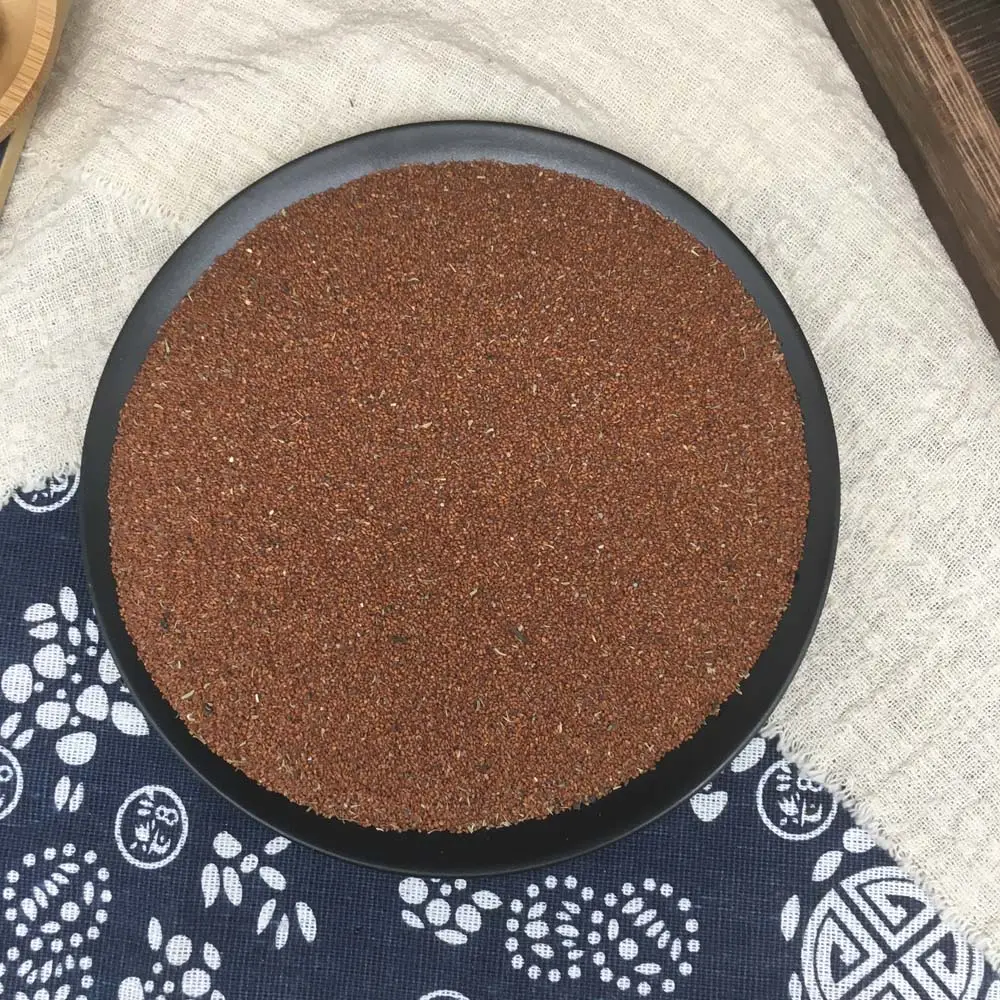
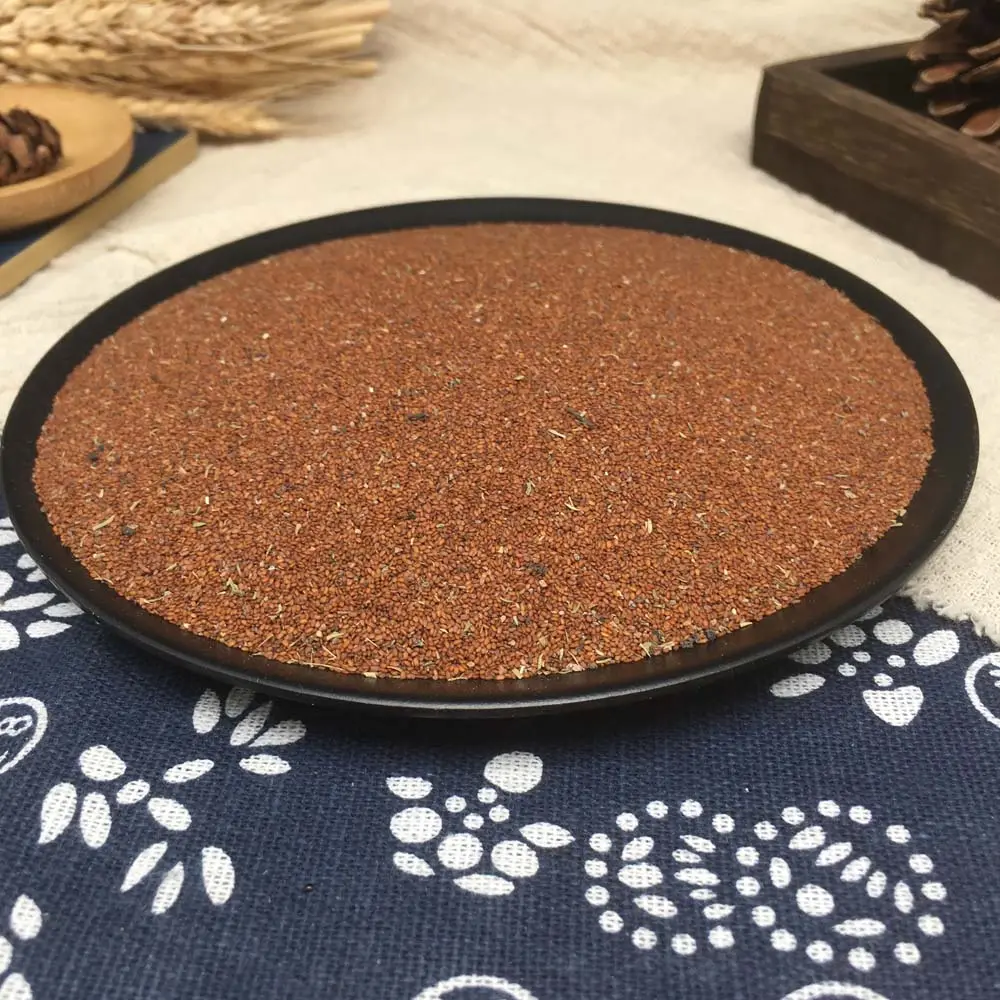



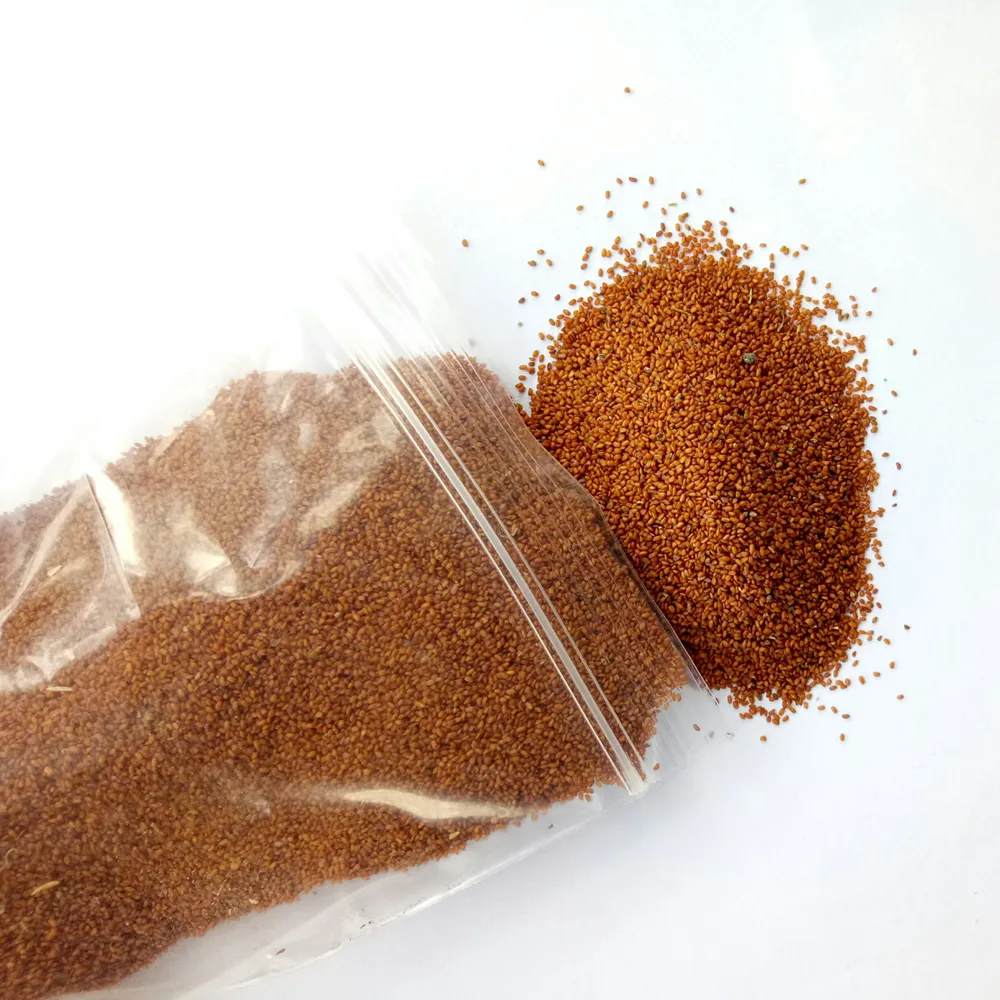
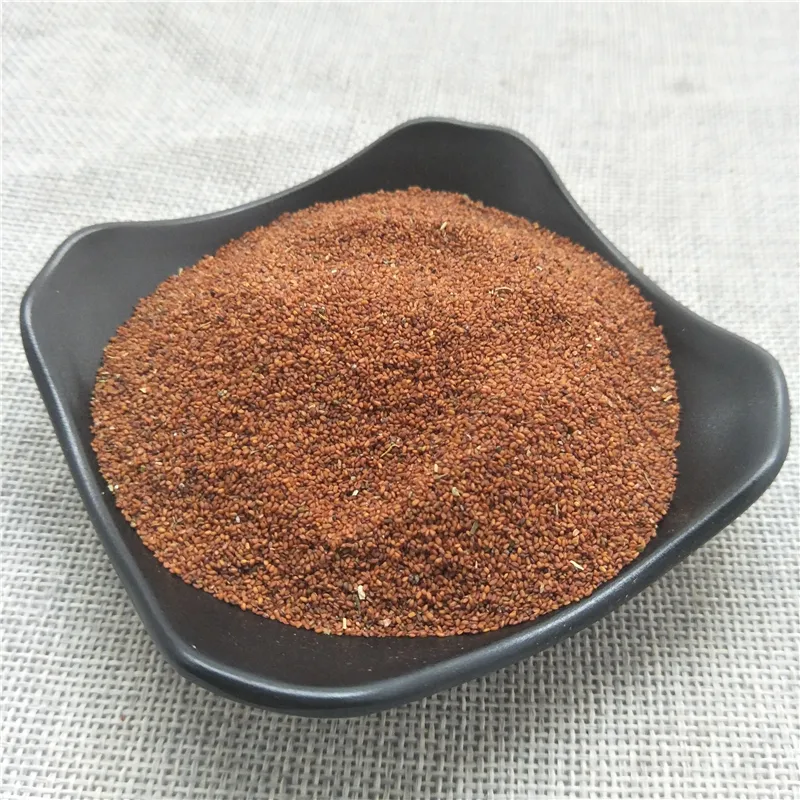
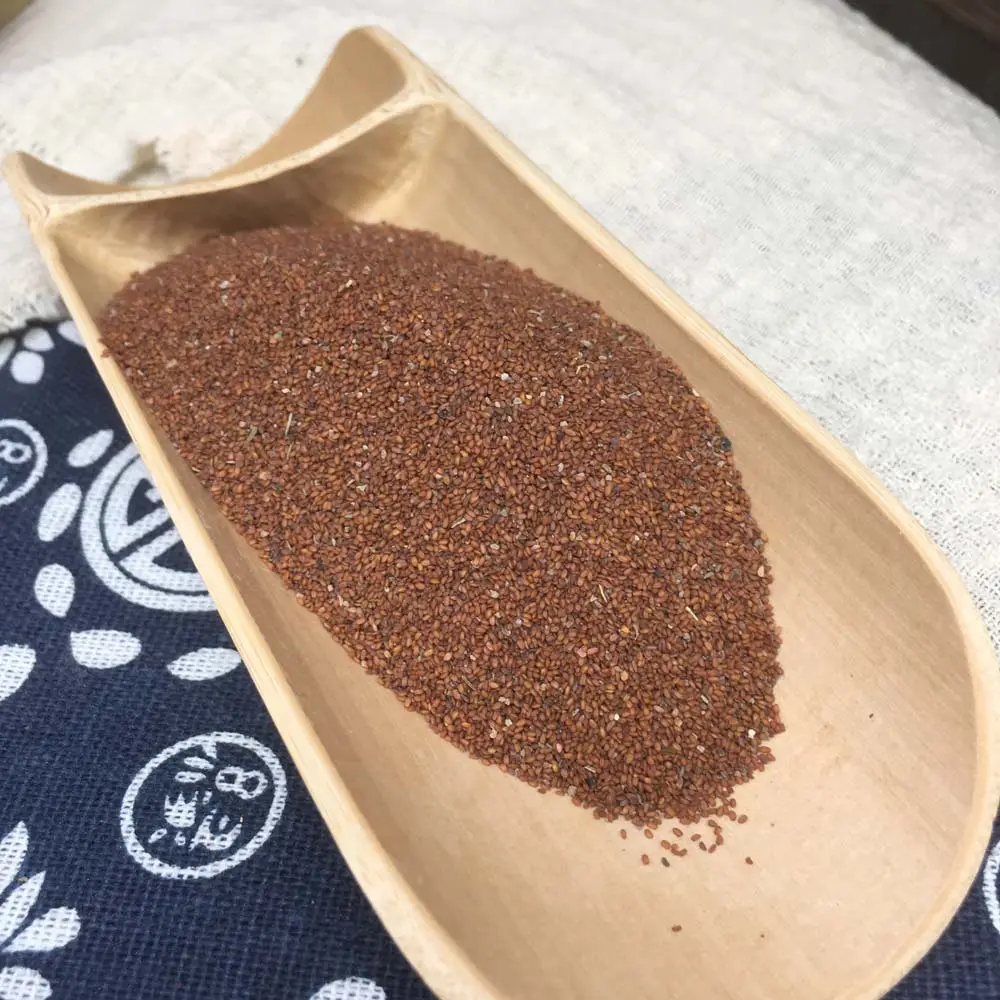

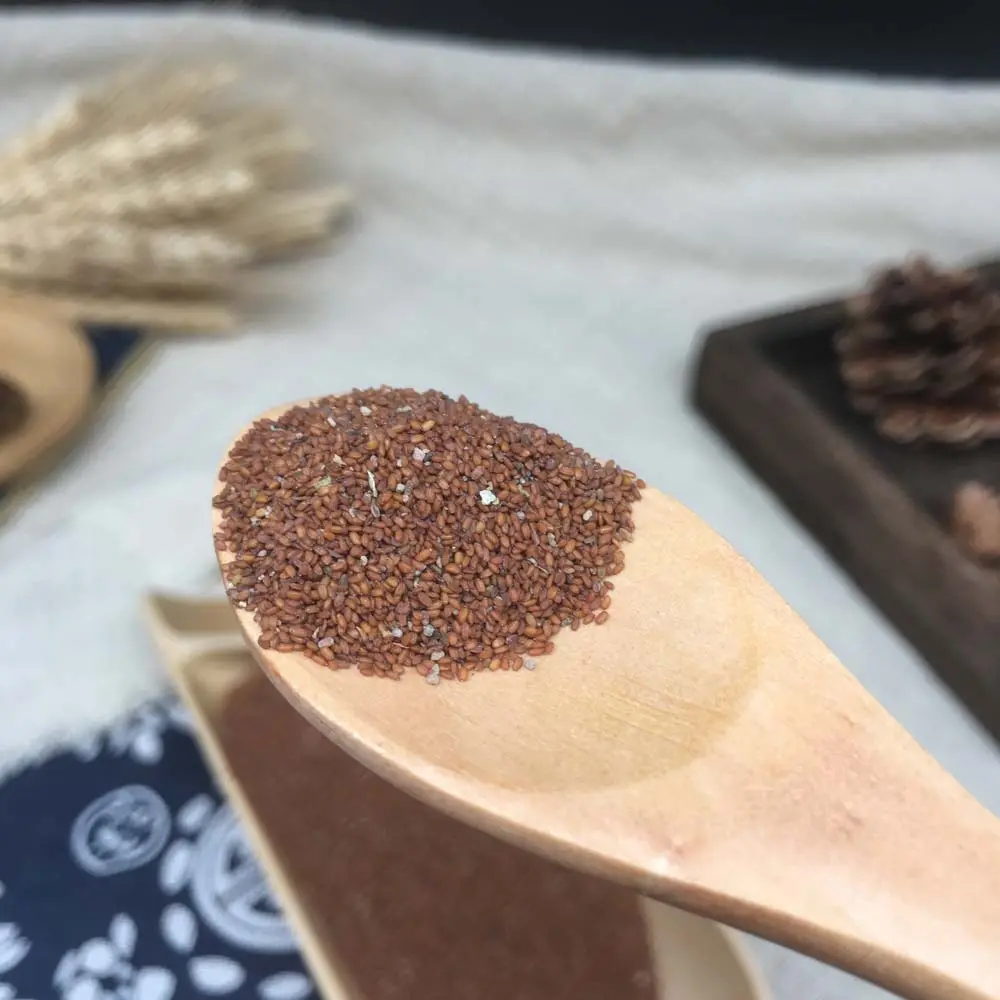
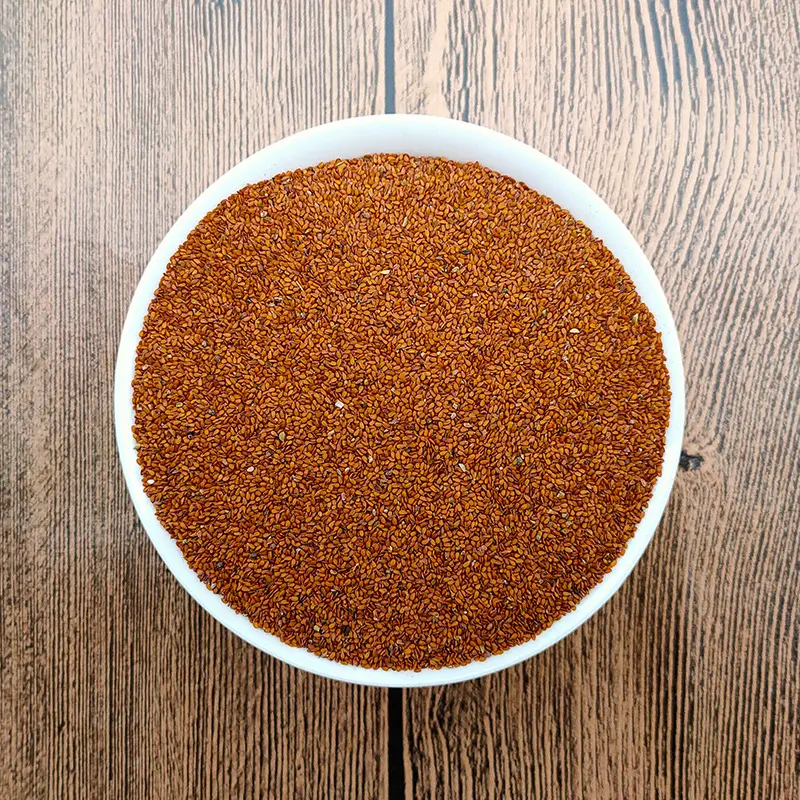




Reviews
There are no reviews yet.